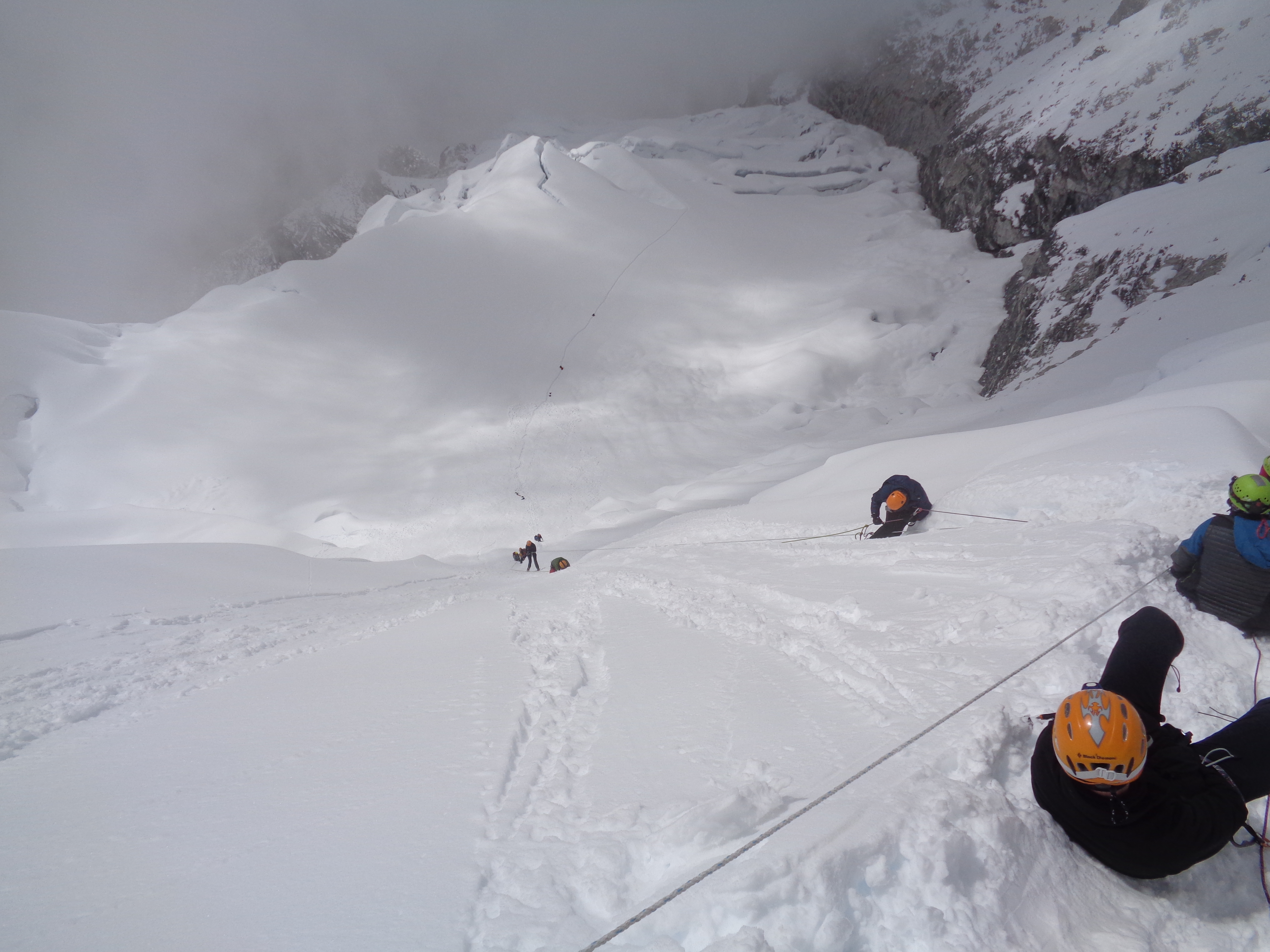There have been a number of unnecessary deaths on Island peak in the past few years it should be noted this has to do with lack of acclimatization and physical preparation. We want you to be informed and fully prepared for Island Peak Climb with us. Once you have finished reading this page why not check this page that hold all the important links and information.
Ian Taylor Trekking only run a limited number of quality trips each year. We work with world class climbing Sherpa’s and western guides so we can keep consistency and safety to a maximum. We also fix our own ropes on the head wall for your safety. READ SOME REVIEWS
Island Peak is Not a Trekking Peak
Island peak is NOT a trekking peak. We highly recommend doing one of our winter skills mountaineering course in Scotland or Colorado before attempting to climb Island peak. We run ladder training while we are in Chuckung because, some years ladder crossings are required. Our guides will also go over basic mountaineering training in Chuckung before, heading into Island peak Base Camp for two nights. You do need to have a basic understanding of abseiling or rappelling between fixed lines. This is important.
You will be climbing at 6,000m/ 20,000 feet on a 50 – 70 degree angle on challenging terrain at extreme altitude. This is why we fix our own ropes. As you can see in our Island Peak video’s undoubtedly, you need to come prepared for Himalayan style mountaineering. We can help you. CONTACT US and learn more about our approach to climbing Island peak.
85% Success Rate our Island Peak Climbs
We have developed our own unique itinerary. Our itinerary has three nights in Namche Bazaar 3,440m/ 11,300 feet on the way up the trail. To give yourself the best chance of acclimatizing better without a doubt, it is important to spend more time at this elevation. Our itinerary adds two additional nights in Dingbouche at 4,350m/ 14,272 feet. On our normal Island peak itinerary we trek to Everest Base Camp and Kala Patthar at 5,645m/ 18,520 feet before coming back down the trail to Pheriche, then move to Chuckung.
Once You Arrive in Chuckung
We then conduction mountaineering training before heading to Island peak base camp for two nights. This gives you more acclimatization along with time to do some additional mountaineering training. We have even more acclimatization moving up to Island Peak high camp at 5,500m/ 18,044 feet. Having all this acclimatization give us a 85% success rates on Island peak trips. We have the itinerary and team in place to give you the best chance at success. If you come fully trained and prepared you give yourself the best chance at making the summit. We will play our part by giving you the best itinerary and acclimatization. Check out some videos on Instagram page.
Climb Island Peak With Professionals
I have climbed Island peak 17 times to date and lead 19 Island Peak Expeditions. Ang Kami our head climbing Sherpa has climbed Island peak over 200 times. I am available to help you understand the specific training and technical skills needed, so you can be safe and successful on Island peak. Check out THIS PAGE for very important information on climbing Island peak. Then get on our BLOG and read more about the Everest region, Nepal and climbing Island peak.
What Technical Skills do I need to Climb Island Peak
When it comes to preparing for going up the head wall you need to find 60 to 70 degree angle terrain. Have a guide set up ropes with 4 or 5 different anchor points. You will have a Jumar on a sling or cows tail attached to your harness. You should also have a sling (safety line) with carabiner on the end of the sling. The carabiner should be able to go above the Jumar on the fixed line. You do not want the Jumar going higher than your nose when fully tight.
Rappelling or Abseiling
The key mountaineering training should be for going down the head wall. You will want your safety line with carabiner on the fixed line. The safety should be kept above the figure of 8 (descending device) as you abseil down. You need to be comfortable abseiling using a figure of 8 and learning to flip the figure of 8 over once you reach each anchor point. You need to make sure your safety line is tight as you find the next abseil. Once you have found the rope and you are safe with the figure of 8 to abseil, then and only then do you take the safety line from above the anchor point and place on the rope you are abseiling on.
Safety First
You will have to abseil or rappel down the head wall using a figure of 8 at 6,150m/ 20,177 feet high. Getting you up and down steep terrain is challenging at altitude clearly, you will need to have the leg strength and fitness to be safe. You need to be really comfortable using ropes, Jumar ascender and more importantly abseiling using a figure of 8 on fixed lines. This is really important for your safety and the safety of our guides and staff.







